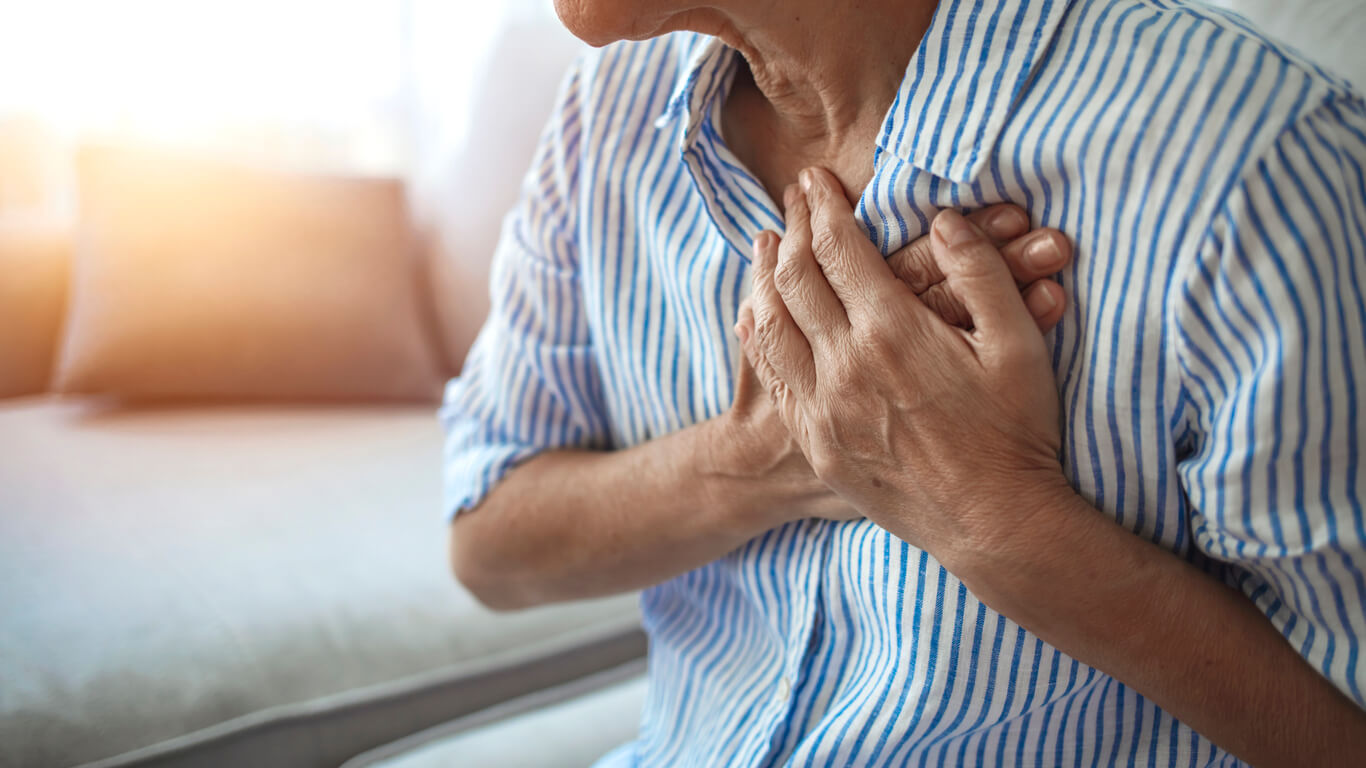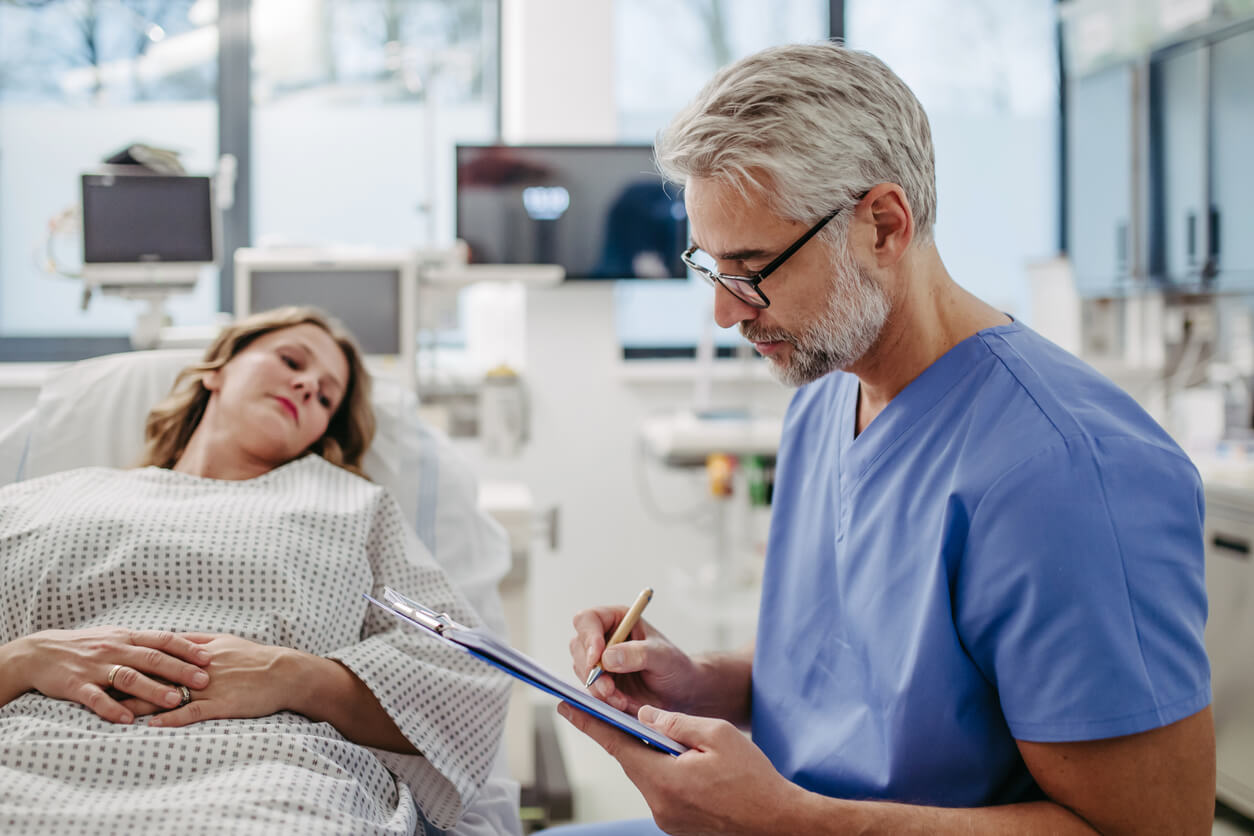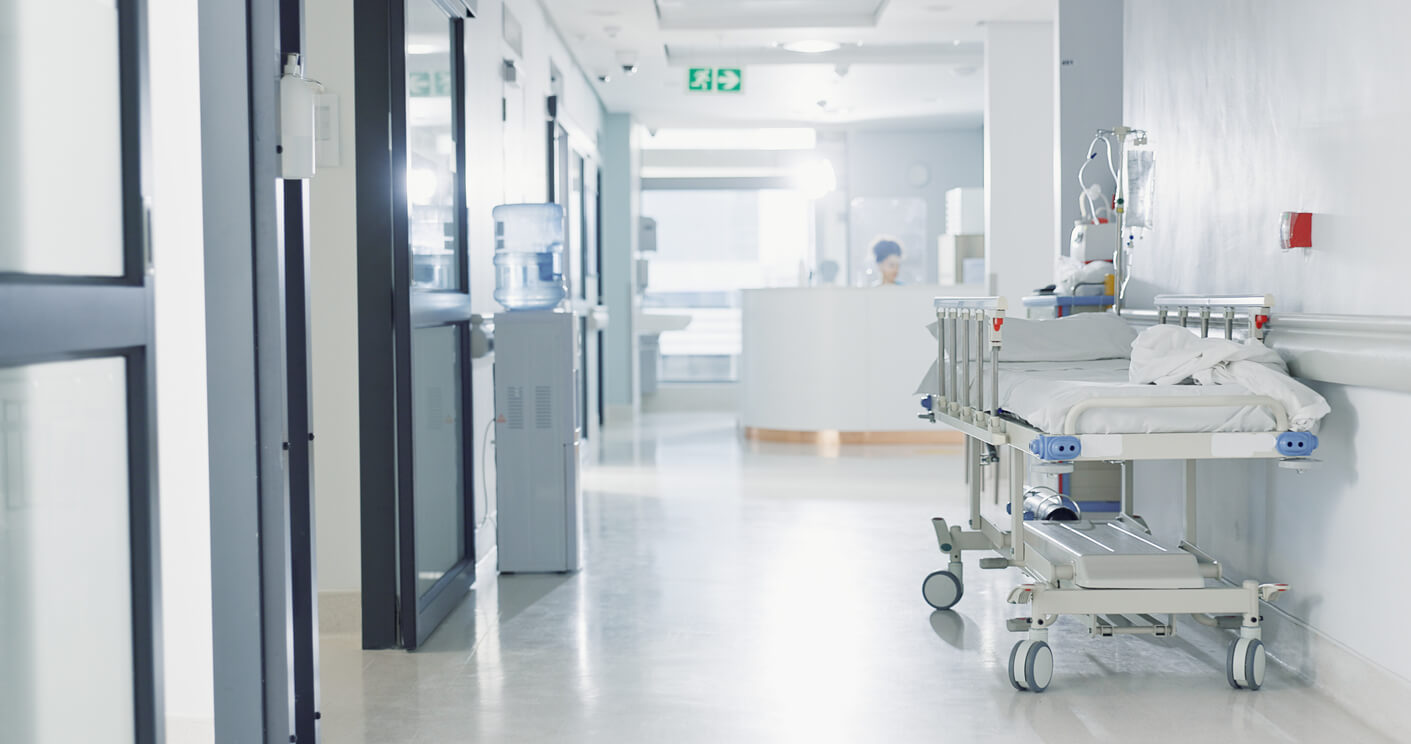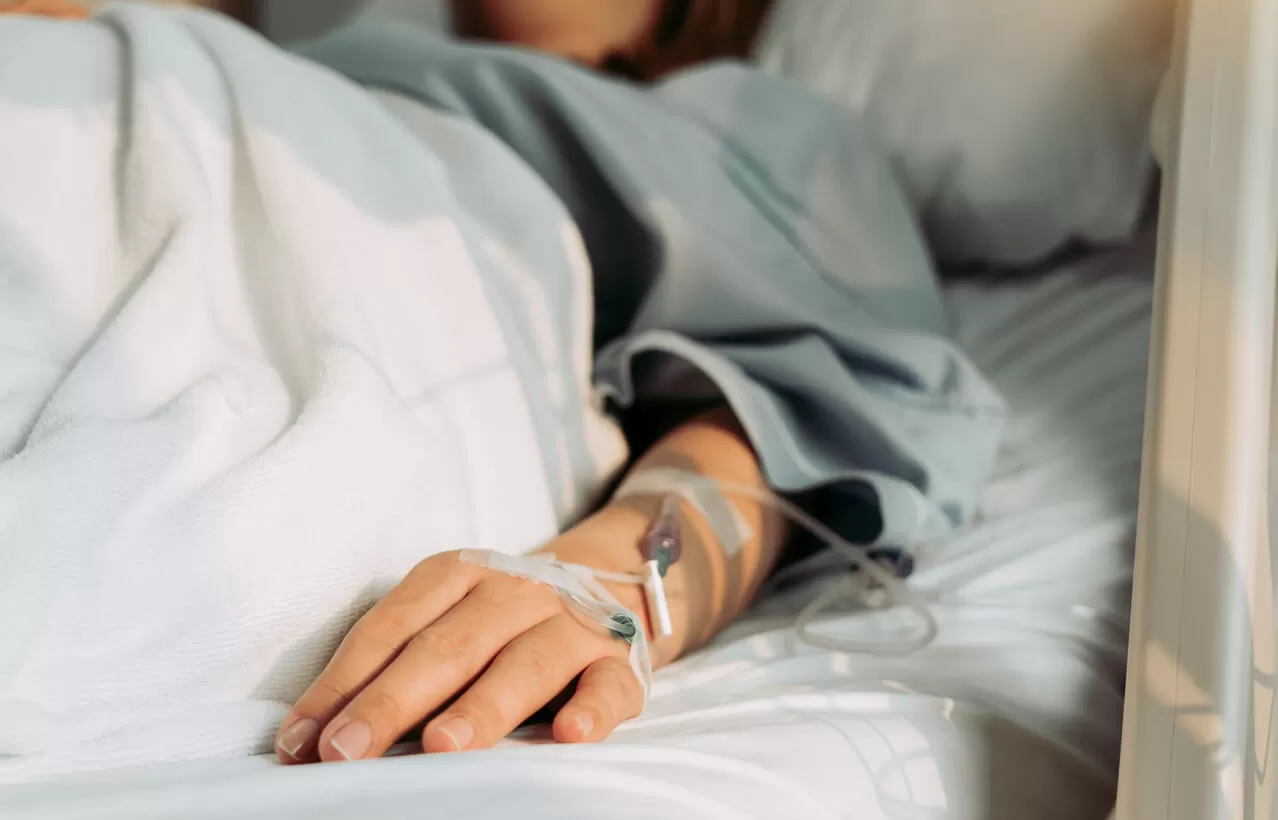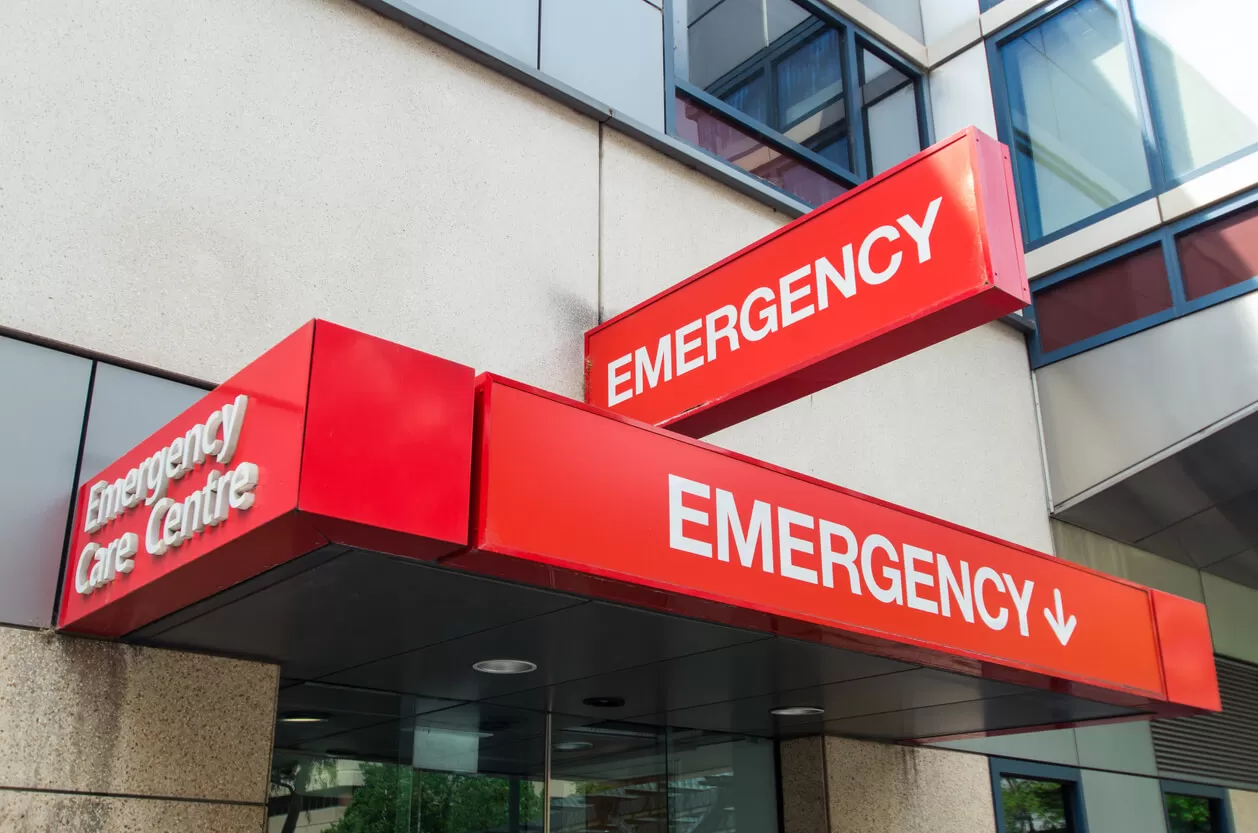Chest pain is one of the most common symptoms that brings people to the emergency room. While not all chest discomfort points to a life-threatening condition, some causes of chest pain can be serious and even fatal if not managed quickly.
Understanding when chest pain signals a medical emergency can help you or a loved one quickly get the care you need.
Go to the ER or Call 911 for These Chest Pain Emergency Symptoms
If you experience ANY of the following, seek emergency medical help immediately:
Pain Characteristics
- Crushing, squeezing, or pressure-like chest pain
- Sudden onset of severe, sharp chest pain
- Pain that spreads to your left arm, neck, jaw, back, or upper abdomen
Associated Signs
- Chest pain with severe shortness of breath
- Cold sweats, nausea, or vomiting
- Chest pain with dizziness, fainting, or confusion
Pattern and Context Factors
- Chest pain brought on by exertion or physical activity
- Chest pain that persists or doesn’t resolve
- Chest pain that’s getting progressively worse
- Recurring episodes of chest pain
Trust Your Instincts
- You feel like “something is seriously wrong”
- High-risk patients with any unexplained chest discomfort
These symptoms may signal serious medical emergencies, including a heart attack, blood clots in the lungs, or tears in the major artery.
Your Step-by-Step Action Plan
Recognizing these emergency signs is crucial. Here’s what to do when they occur:
For Emergency Symptoms
- Call 911 immediately—don’t wait more than 5 minutes to decide
- Sit upright in the most comfortable position possible
- Loosen tight clothing around your chest and neck
- Stay calm and focus on steady breathing
- Note the time symptoms started and inform paramedics
- If symptoms change or worsen while waiting, inform emergency responders
For Non-Emergency Pain
- Stop physical activity and rest in a comfortable position
- Rest for 15 minutes and reassess your symptoms
- Note symptom details—timing, triggers, and characteristics
- Try position changes or antacids if you suspect heartburn
- If no improvement in 30 minutes, contact your doctor
- If pain worsens at any point, upgrade to emergency care
| Where Should You Go? Quick Decision Guide
Once you’ve taken immediate action, you must know where to get help based on your symptoms. Emergency Room / Call 911
Urgent Care (Same Day)
Home Care / Schedule Doctor Visit
When Uncertain: Always choose the more urgent option. |
What Causes Chest Pain? Common and Serious Conditions
There are many possible causes of chest pain, ranging from mild to life-threatening:
Cardiac Causes
- Heart Attack: This condition is due to a blocked blood flow to the heart muscle. May cause crushing chest pain, pain in the left arm, jaw, neck, or upper abdomen, and shortness of breath.
- Angina: Chest pain due to reduced blood flow through the heart’s arteries.
- Aortic Dissection: A serious condition involving a tear in the aorta, often causing sudden, severe pain.
Lung-Related Causes
- Pulmonary Embolism: A blood clot in the lungs that can lead to sharp pain, dizziness, and shortness of breath.
- Collapsed Lung (Pneumothorax): Can result in sudden chest pain and trouble taking deep breaths.
- Pneumonia or Pleurisy: Inflammation or infection of the lungs can cause chest discomfort, cough, and fever.
Digestive Causes
- Stomach Acid Reflux (GERD): Can mimic cardiac chest pain by causing burning in the chest or upper abdomen.
- Gallbladder Issues or Pancreatitis: May present as abdominal pain that radiates to the chest.
Musculoskeletal and Other Causes
- Muscle Strains: Common after physical exertion or injury.
- Panic Attacks: A sudden feeling of fear or anxiety that may include chest pain, rapid heart rate, shortness of breath, or dizziness.
What to Expect in the Emergency Room
Emergency departments prioritize chest pain cases due to their potential severity. Here’s what to expect during your visit:
1. Immediate Assessment
Medical staff will quickly evaluate your vital signs, including blood pressure, heart rate, pain level, and symptoms. While reviewing your medical history, they’ll ask about pain characteristics, timing, and other signs.
2. Diagnostic Tests
Standard chest pain emergency room workups often include:
- Electrocardiogram (EKG) to check heart rhythm
- Blood tests to detect heart damage markers
- Chest X-ray to rule out lung problems
- Sometimes, a CT scan or an exercise stress test is needed for further testing
3. Physical Exam
The doctor will perform a comprehensive physical exam, checking for signs of heart disease, lung problems, or other medical conditions that could explain your symptoms.
4. Monitoring Period
Even if initial tests appear normal, doctors may observe you for several hours to monitor for changes in symptoms, start or test results, especially if you have heart disease risk factors.
Non-Emergency Chest Pain: When to Wait
Not every chest pain episode requires emergency care. Consider scheduling a doctor’s appointment rather than going to the ER if your pain:
When You Can Wait
- Feels more like heartburn or indigestion
- Improves with position changes or antacids
- Relates to recent physical activity or injury
- Comes with anxiety symptoms but no physical distress
- Has occurred before with a known, benign cause
- Mild pain that improves within 10-15 minutes
- Pain is clearly related to recent physical activity that resolves with rest
- Heartburn-like symptoms that respond to antacids within 30 minutes
When to Call Your Doctor (Within 24 Hours)
- Mild chest discomfort lasting more than 2 hours
- Recurring episodes over several days
- New chest pain with no clear cause
However, always err on the side of caution. If you’re uncertain about symptom severity, seek immediate medical evaluation.
Risk Factors That Increase Emergency Likelihood
Certain conditions make chest pain more likely to represent a serious emergency:
High-Risk Health Conditions
- Previous heart attack or heart disease
- Diabetes, high blood pressure, or high cholesterol
- History of blood clots or lung disease
- Family history of early heart disease
Lifestyle Risk Factors
- Current or former smoking
- Obesity or a sedentary lifestyle
- High stress levels
- Age over 65 (men) or post-menopause (women)
Special Considerations for High-Risk Groups
Women
Women may experience heart attacks differently:
- Unusual fatigue or weakness (may start days before)
- Nausea, vomiting, or indigestion-like symptoms
- Upper back, shoulder, or jaw pain
- Shortness of breath without chest pain
- Lightheadedness or dizziness
If you’re a woman over 50 with risk factors, don’t dismiss these “subtle” symptoms.
Adults Over 65
- Shortness of breath instead of chest pain
- Fainting or sudden confusion as primary symptoms
- Sudden weakness or fatigue
- Less obvious chest pain due to age-related changes
Age-related changes can mask typical heart attack symptoms. When in doubt, seek immediate care.
Diabetes
Diabetic patients may experience different heart attack symptoms due to cardiac autonomic neuropathy:
- Nearly half as likely to feel chest pain during heart attacks
- More than twice as likely to experience unusual fatigue as the main symptom
- Difficulty breathing, especially in those with diabetes 10+ years
- Nausea, sweating, and weakness instead of the typical chest pain
Diabetic nerve damage can affect pain pathways from the heart to the brain, leading to diminished or absent chest pain. If you have diabetes and feel “something’s not right,” trust your instincts and seek evaluation.
Prevention
Blood Pressure Management
High blood pressure strains the heart muscle and damages arteries over time. Many people with uncontrolled hypertension experience no symptoms until serious complications develop. Regular monitoring and medication compliance are essential.
Lifestyle Modifications
- Maintain a heart-healthy diet low in saturated fats
- Exercise regularly as approved by your doctor
- Quit smoking and limit alcohol consumption
- Manage stress through relaxation techniques
- Take prescribed medications consistently
Regular Medical Care
Schedule routine checkups, especially if you have risk factors. Your doctor may recommend periodic stress tests, cholesterol monitoring, and blood pressure checks to prevent cardiac emergencies.
Reliable Emergency Care When You Need It Most
When chest pain is an emergency, every second matters. It may be caused by a wide variety of medical conditions, and when symptoms start suddenly or feel different from normal, don’t hesitate to seek emergency care right away. Your instincts matter—if something feels wrong, get medical attention immediately. Timely treatment can prevent serious complications and save your life.
At Reliant Emergency Room in Corpus Christi, we provide 24/7 emergency medical services with state-of-the-art diagnostic equipment, board-certified emergency physicians, and minimal wait times. Our facility delivers comprehensive emergency services for all types of chest pain emergencies, from heart attacks to collapsed lungs, with the highest quality care when you need it most.
When you’re unsure whether your symptoms constitute an emergency, trust the experts at Reliant ER. Call (361) 257-1478 or visit us at 3910 Saratoga Blvd, Corpus Christi.
Medical Disclaimer: This information is for educational purposes only and should not replace professional medical advice, diagnosis, or treatment. Always consult with qualified healthcare providers about your specific health concerns. If you’re experiencing chest pain and are unsure whether it’s an emergency, seek immediate medical attention.

